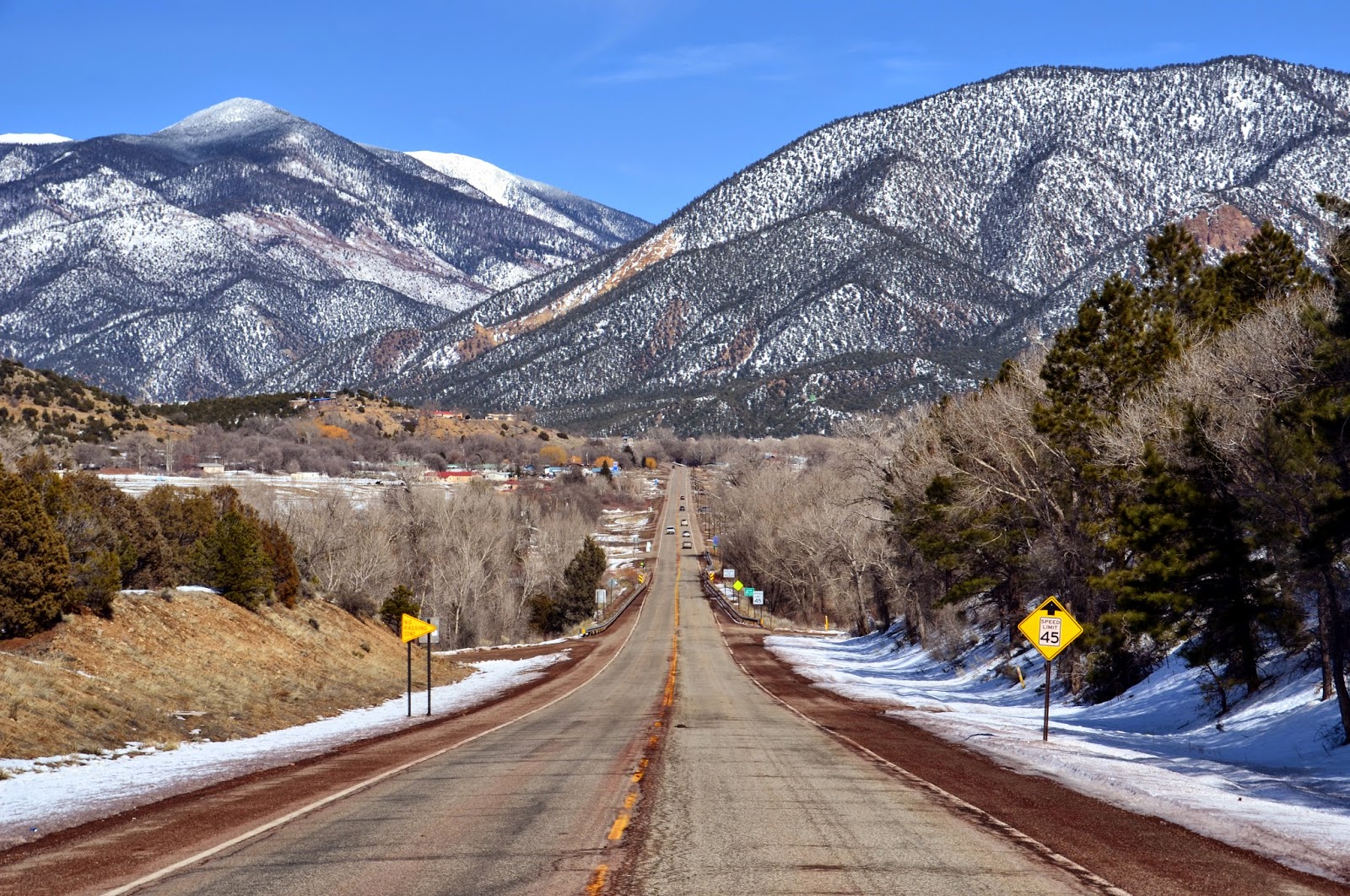The Adobe Belle Resort at Conchas
Lake
Now much of the structural work and upgrades have been done,
the process of picking a new concessionaire is underway and the resort should
be back in operation soon, maybe even by this summer, says Steve Peterson, lake
manager for the U.S. Army Corps of Engineers.
The Adobe Belle cottages have long been one of state’s best
kept vacation secrets.
It’s a place where guests can lounge on a lawn under a big
shade tree while enjoying a cool breeze
and the view of the immense lake.
Each two-bedroom cottage features hardwood floors, exposed
vigas, thick adobe walls, kiva fireplaces and tiled bathrooms. Each has an enclosed patio, shaded carport and
plenty of seclusion too.
The four duplex, rental cottages are tucked away in a secluded
neighborhood under a canopy of shade trees behind the Army Corps offices at the
dam.
The rental cottages are a big draw for those who like to
fish the lake for its bass, walleye, and other warm water species.
Recent monsoon rains and decent winter snows have helped the
lake recover from years of drought and the fishing is now reported to be some
of the best in the state, says Eric Frey, sport fish program manager for the
New Mexico Department of Game and Fish.
 |
| A good clue as to where the fish might be. |
But if its history you’re into, then Conchas lake is a
really a great place to visit.
Built primarily as a public works project to provide jobs to
New Mexicans at a time when half the state was unemployed back in the 1930s,
the dam provides flood control, irrigation and recreation today.
It is listed on the National Register of Historic Places in
part because of the Spanish/Pueblo Revival architectural style used throughout
the project.
 |
| The Adobe Belle cottages. |
While crossing the dam one might notice the bronze doors and
wrought iron lantern fixtures built into the structure.
A stop at the Corps office will reveal paintings by artists
employed during the Depression that document the dam’s construction.
And the visitors’ center is stocked with interpretive and
historical displays and a video of the dam’s history.
But what one can’t see any longer is the town that was
carved out of the desert on the Bell Ranch just downstream of the dam to house
some 2,500 workers and their families while the project was underway.
Ninety percent of the workers on the project came off the
relief rolls, earning between 25 to 45 cents an hour.
The town known as Conchas
City
There was a mess hall to feed 1,500 workers a day, a 24-bed
hospital considered one of the best in the state at the time and related
businesses including a gas station, drug store, restaurant, pool hall, grocery
store, barber and tailor’s shops.
The community hosted a grammar school and high school, a
700-seat movie theatre that was the envy of the area and even tennis courts and
a golf course.
Electricity was provided for the town by generators powered
by natural gas obtained through a pipeline laid by workers to Tucumcari, some
32 miles away.
The town was later dismantled when the 235-feet high,
1,250-feet long dam, $15-million dam was completed after four years of
construction. Many of the same materials were later reused by CCC
workers to create the Army Corps’ offices, workshops and the cottages at the
dam.
A history of the U.S. Army Corps of Engineers Albuquerque
District by Michael E. Welsh provides in-depth details about the dam project
including ethnic tensions, political scandals and other issues that arose and
may sound familiar today.
For example, primary contractors on the job brought in
Mexican Nationals from their Los Angeles base of operations who were deemed
more competent and learned in the ways of heavy construction than the relief
roll workers, of whom 60 percent were poor, local Hispanics from farming and
ranching backgrounds, according to Welsh’s book.
This led to ethnic tensions during the project which still exist today for many New Mexicans.
This led to ethnic tensions during the project which still exist today for many New Mexicans.
And a prominent U.S. Senator, Dennis Chavez, was at the
heart of allegations that he had placed relatives and family members inside the
public relief system who pressured relief workers statewide to make campaign
contributions to the Chavez political machine or face transfer from their
hometown relief jobs to the remote project at Conchas Dam, according to Welsh’s
book.
This earned the Conchas Dam project the nickname “Devil’s
Island ” among some workers who were forced to toil there.
Today the construction town is gone but the lake remains
with several campgrounds to enjoy, a couple of boat ramps, a marina and other
amenities that make the state’s third largest lake a great vacation
destination. And it’s just a two-hour, very scenic, drive from Las
Vegas .
For more information about Conchas
Lake

















































